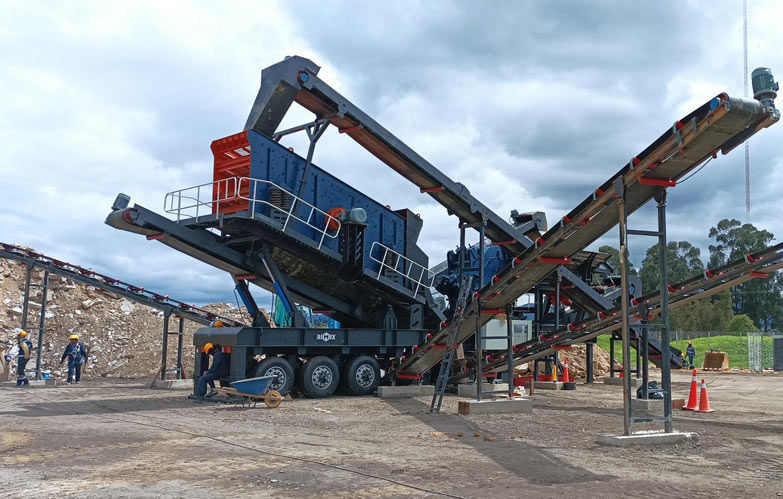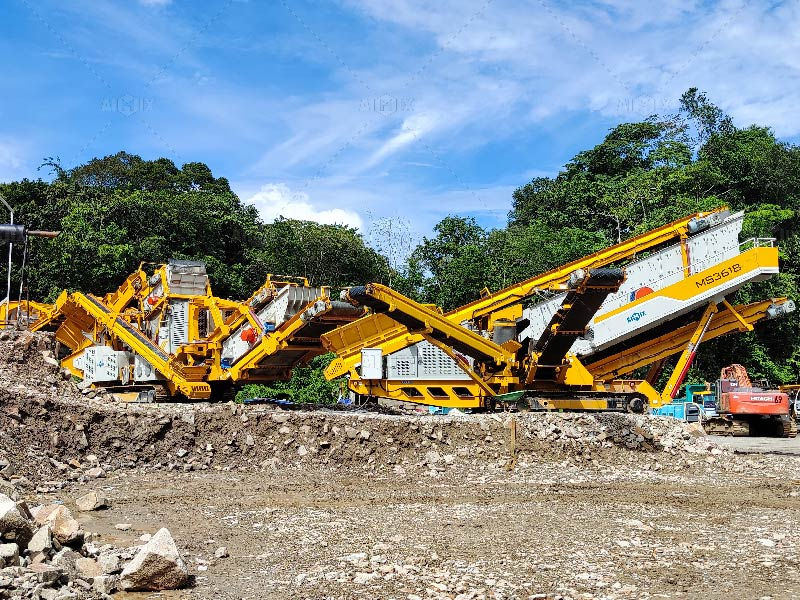Emergency Stop and HMI Design How Modern Crushing Plants Reduce Operational Risks
- info515452
- 6月10日
- 讀畢需時 3 分鐘
Crushing operations in the aggregates industry are no longer just about breaking rock efficiently—they’re about doing it safely, intelligently, and with minimal downtime. In high-output environments, where aggregate production is continuous and conditions can be harsh, one of the greatest risks is unexpected equipment failure or operator error. That’s where emergency stop systems and modern Human-Machine Interface (HMI) design come into play. These features are now essential components of any advanced aggregate crusher plant(planta chancadora de agregados), particularly for those focused on safety, automation, and productivity.

The Importance Of Safety In Aggregate Crushing Operations
Crushing plants deal with massive materials, heavy equipment, and 24/7 operations. A single oversight—such as a jammed feeder, a conveyor belt failure, or a miscommunication between teams—can lead to equipment damage, costly downtime, or even personal injury. That’s why safety systems like emergency stops (E-stops) and intuitive HMIs have become standard in modern stone crusher plants.
Unlike older manual systems, today's safety protocols are deeply integrated into the core control architecture of the crushing plant. With a well-designed HMI and clearly placed E-stop switches, operators can respond instantly to abnormalities, isolate the problem, and take corrective action—all within seconds.
How Emergency Stop Systems Work In Crushing Plants
Fast Response To Critical Events
Emergency stop systems are designed to immediately halt all mechanical operations when activated. In a mobile crusher plant(planta trituradora movil), this includes stopping the crusher motor, conveyor belts, feeders, and auxiliary systems. The goal is to contain any threat before it escalates—whether it's a maintenance worker entering a danger zone or a malfunctioning conveyor about to overload the system.
Properly placed E-stops are accessible from multiple points around the plant. In modern setups, they’re integrated with the plant's control software, allowing operators to identify which zone triggered the stop and why. This drastically reduces diagnosis time and helps restore operations more efficiently.
Enhancing Operator Confidence
Knowing that they can instantly shut down the entire system in case of a malfunction gives operators more confidence and peace of mind. This often translates into more efficient performance and reduced hesitation when working near heavy machinery. It's also a strong selling point when presenting a stone crusher plant to clients or project managers concerned about safety compliance.
Role Of Human-Machine Interface (HMI) In Modern Plants
Intuitive Control For Faster Decisions
The HMI is the operator’s window into the system. A modern HMI should do more than just display data—it should guide the operator through safe workflows. With features like color-coded alarms, real-time production metrics, system health indicators, and interactive fault notifications, the HMI helps operators make faster, safer decisions.
In a high-production aggregate crusher plant, delays of even a few minutes can affect daily output targets. The right HMI reduces these delays by making it easy to monitor, diagnose, and restart systems without needing manual inspection of each component.
Integration With Safety Protocols
Advanced HMIs work hand-in-hand with safety features. For example, if an E-stop is activated in one section of the plant, the HMI will immediately display the affected area and suggest safe reset procedures. Some systems even include animated guides or built-in training modules for emergency scenarios.
For mobile crusher plants, this becomes even more important, as these machines are often operated in remote or rugged environments. A simple, rugged, and smart HMI allows even less experienced staff to operate the unit safely and effectively.
Combining Mobility With Smart Safety
Mobile crushing equipment has become a top choice for temporary or multi-site projects. But mobility brings unique safety challenges—such as frequent repositioning, changing terrain, and diverse operator teams. That’s why integrating smart HMI design and accessible E-stop systems is not just useful—it’s essential.
Whether it's a compact mobile crusher plant or a large-scale stationary crushing line(plantas de trituración), the safety and usability features built into the system can directly impact the plant's uptime, the operator’s wellbeing, and the overall efficiency of the job site.
Conclusion: A Smarter Way To Crush—Safely
As aggregate demand increases and worksite pressures grow, plant safety must evolve along with output capacity. Emergency stop systems and user-friendly HMI design are no longer optional—they're foundational. These innovations don’t just protect workers—they also protect your equipment, maximize uptime, and enhance the reputation of your operation.
If you're evaluating a new aggregate crusher plant or upgrading an existing stone crusher plant, pay close attention to these safety systems. In a world where performance and safety go hand in hand, the plants with the smartest controls will always lead the pack.






留言